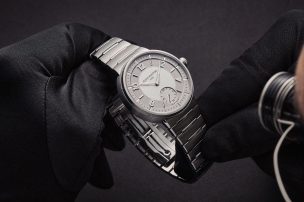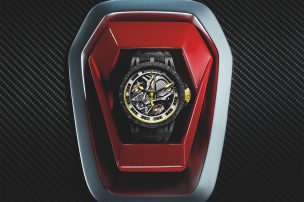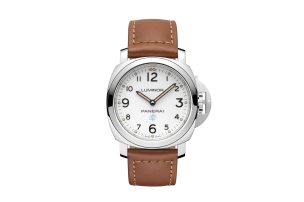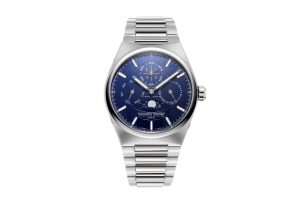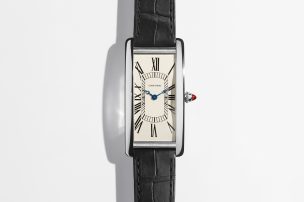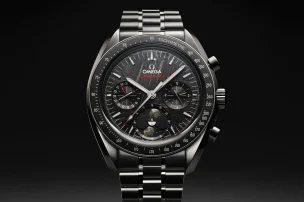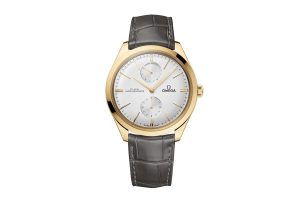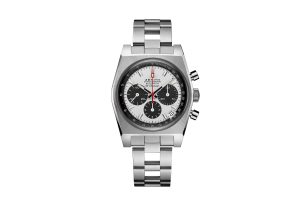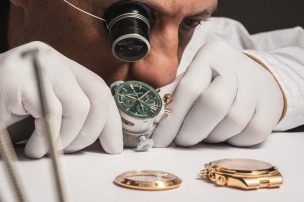

Hermès Arceau Duc Attelé: Parisian Savoir Faire
Despite its roots as Thierry Hermès’ Parisian saddlery workshop for fine harnesses, Hermès has bloomed into a brand with cult status (Birkin bag, anyone?) during the last 187 years. However, it has always maintained its focus on craftsmanship along the way, demonstrating its expertise in haute horlogerie, too. At Watches & Wonders 2024, Hermès presented its latest masterpiece. Equipped with a triple-axis tourbillon and a minute repeater, the Arceau Duc Attelé is sure to make many a heart beat a little faster. The limited edition timepiece comes in a monochrome titanium version or a graceful rose-gold version. Let’s take a closer look.
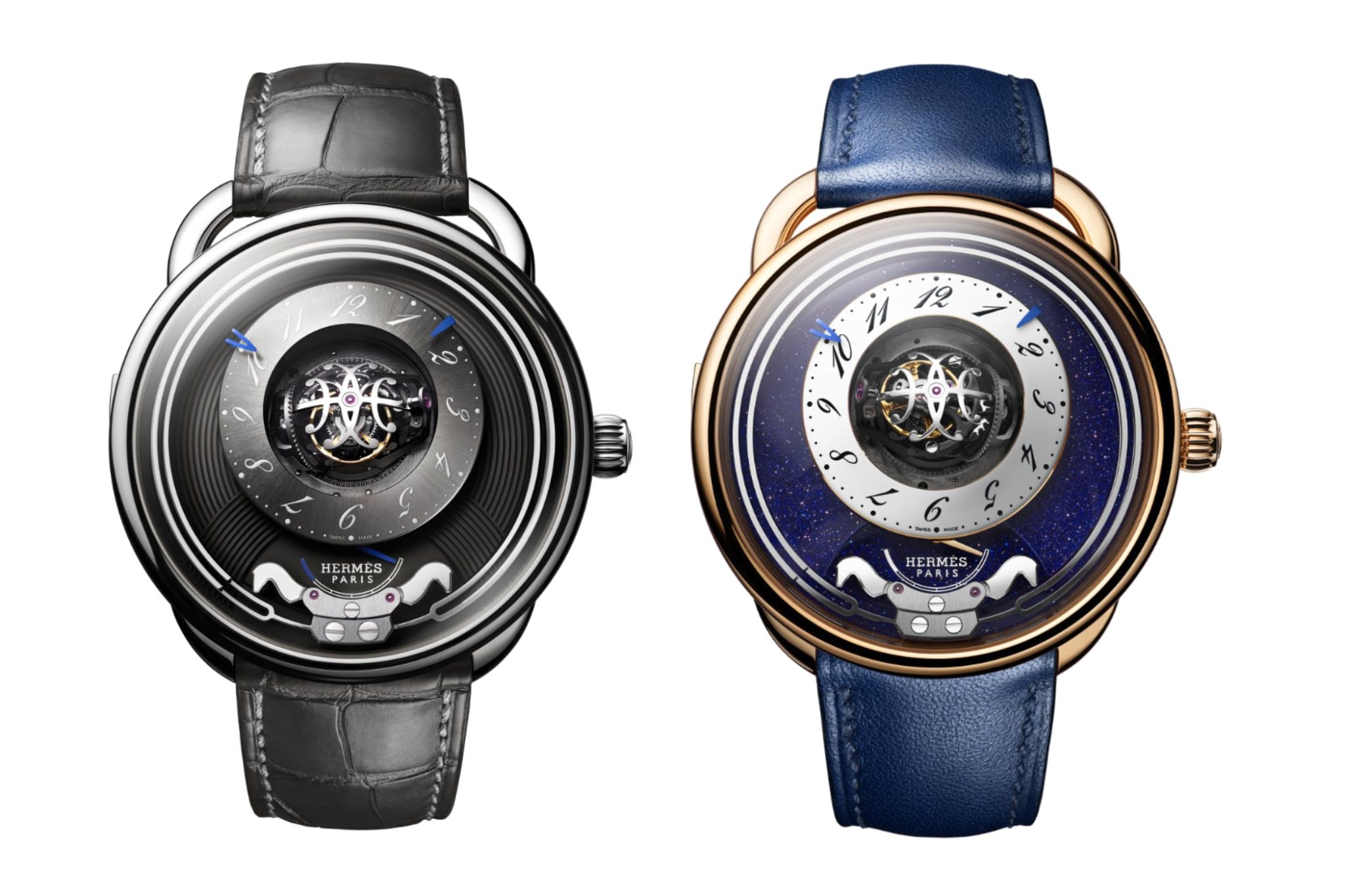
The case
In 1978, Henri d’Origny designed a highly recognisable round case for the Arceau. As a homage to Hermès roots, the case’s asymmetrical lugs are inspired by stirrups. This iconic shape also serves as the durable case for the sophisticated movement of the Arceau Duc Attelé. With a diameter of 43 mm and a height of 16 mm, the case has a respectable size considering the complications it houses.
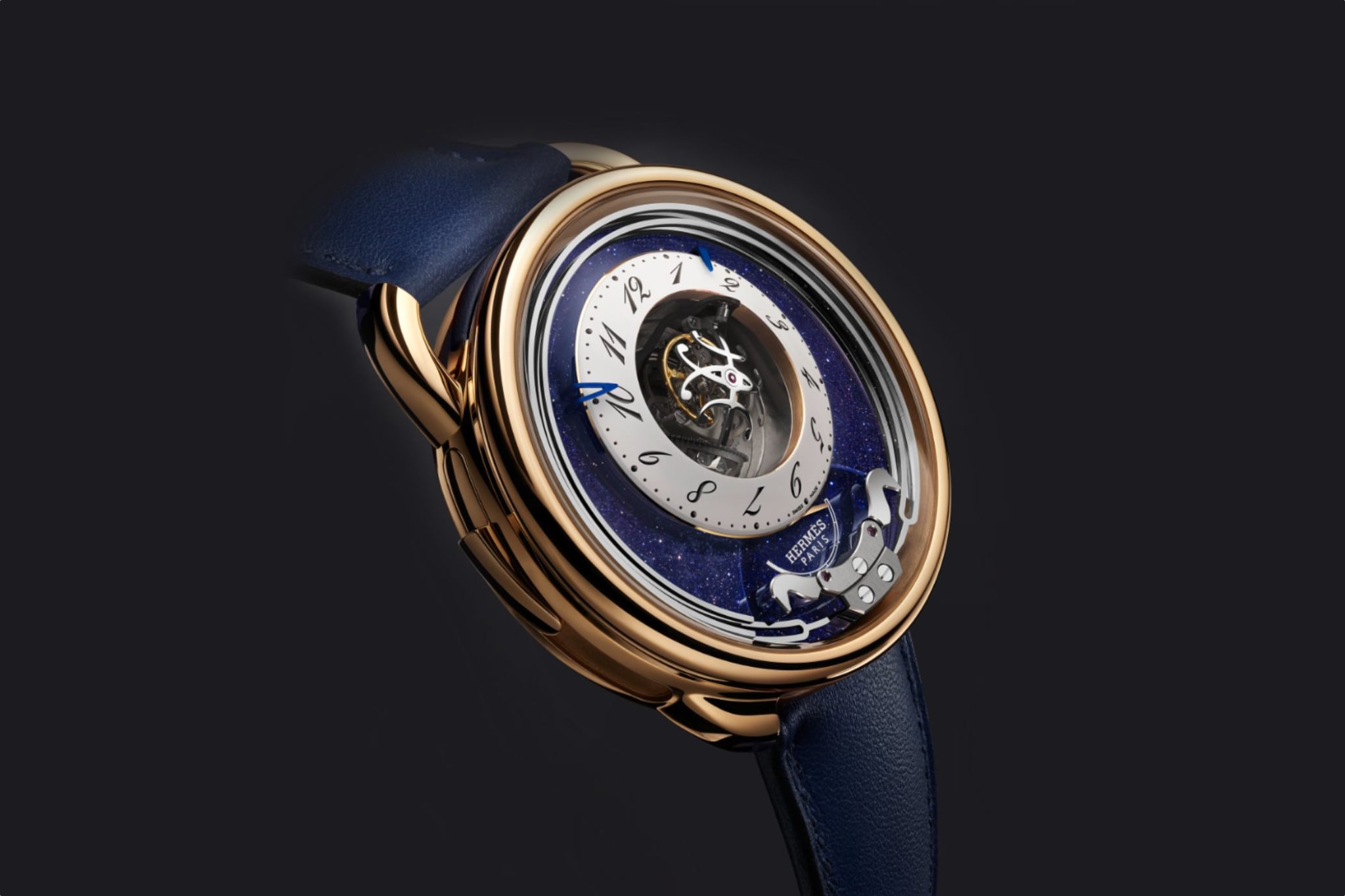
The case is available in two different materials with matching colour combinations. Made of polished grade 5 titanium, the first variant’s case creates a sporty, elegant aesthetic in combination with its dial. Meanwhile, the 750 5N rose-gold case combined with its blue dial presents itself as the more outgoing sibling. The case is complemented by a sapphire crystal dome that spans across the dial. In addition, a sapphire crystal caseback reveals the movement, along with its impressive complications. This elaborate timepiece is water-resistant to a depth of 30 m.
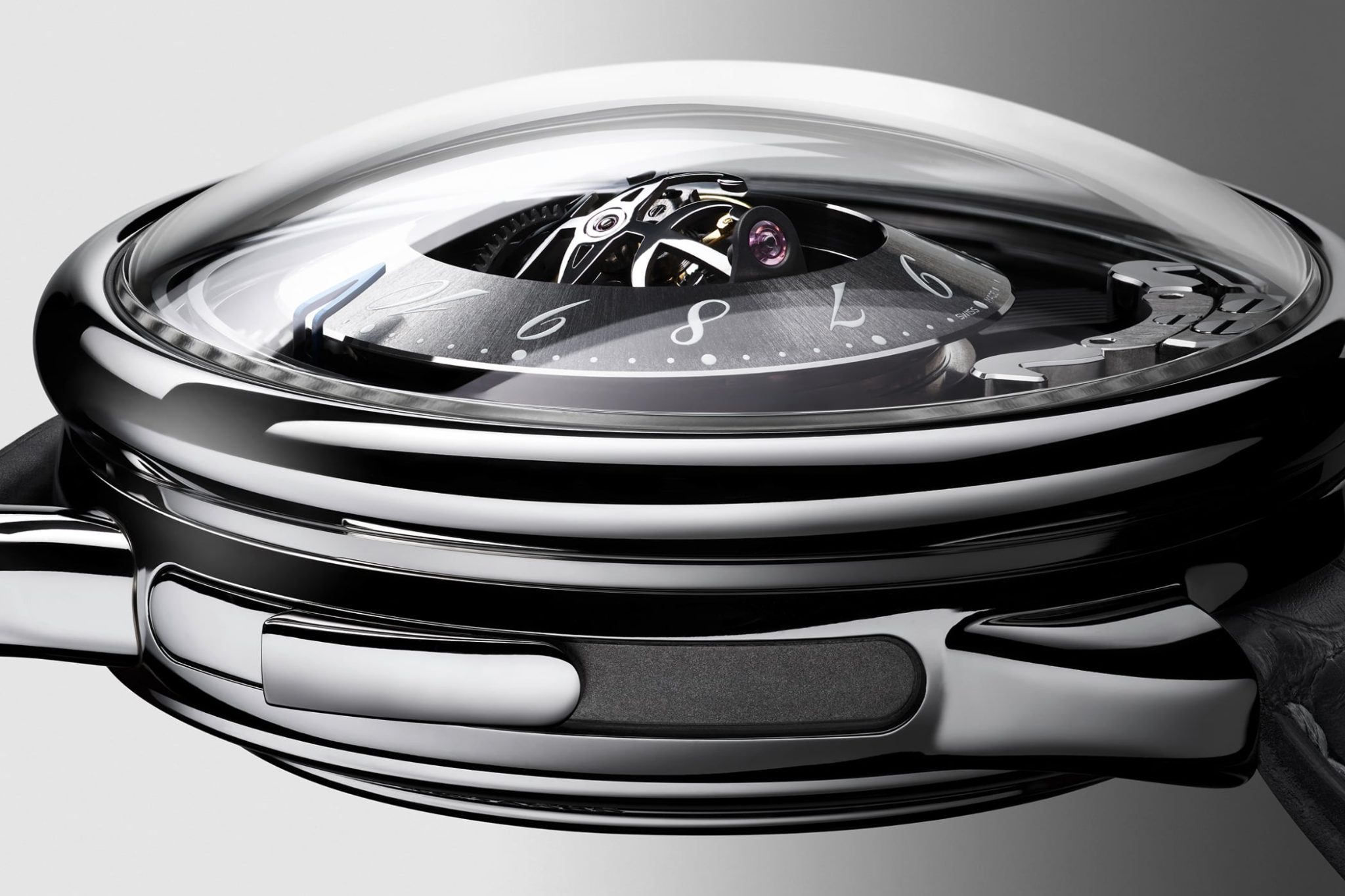
Floating hour-circle
Both versions are characterised by their curved, off-centre hour circle, which is set upon the dial and surrounds the exposed tourbillon. The titanium version bears a light grey-coated and rhodium-plated hour circle with a sunburst finish. By contrast, the hour-circle on the rose-gold edition is white and gold and has a lacquer finish. The hour circle features stamped Arabic numerals in white for the titanium watch and in ‘abyss blue’ for the rose-gold watch. The slanted numerals with a curved typography are intended to evoke a galloping horse, another allusion to equestrian sports. The hour circle appears to float on the dial, which comes with a different design depending on the version.
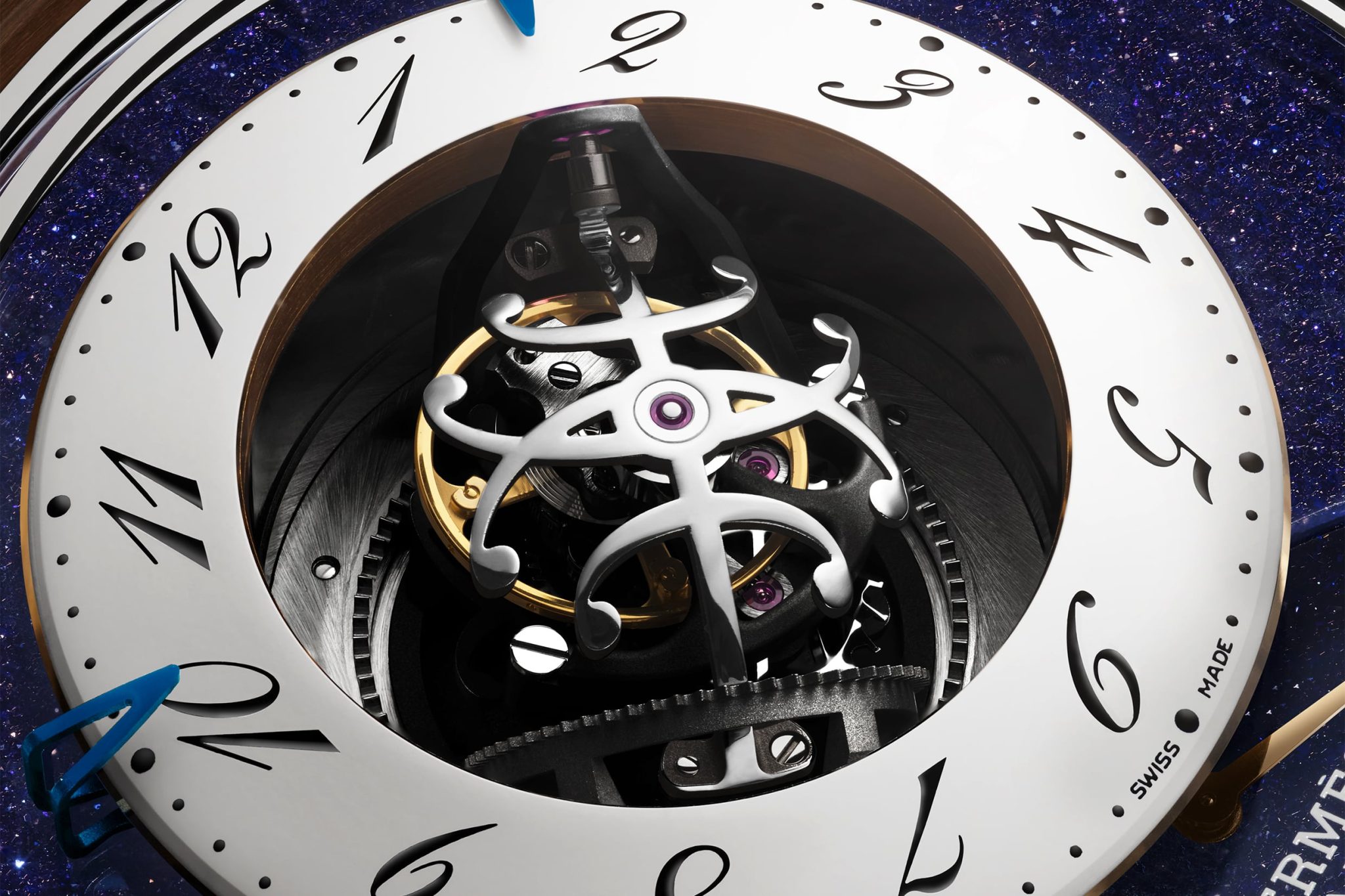
The dial of the Arceau Duc Attelé
The dial provides the background for the floating appearance of the hour circle. On the titanium model, a striped diamond-cut guilloché pattern runs through the lower, anthracite grey-coated dial. The stripes are modelled on the sound waves that propagate when the melody of the minute repeater sounds. Although this timepiece is subtler than its counterpart due to its monochrome colour scheme, the fine details and shades ensure that it is by no means monotonous. The dial of the rose-gold Arceau Duc Attelé, on the other hand, is a deep blue colour. It consists of blue aventurine, which sparkles attractively in the light.
On both dials, the hours and minutes are indicated by claw-shaped blue hands located on the edge of the hour circle. The hand for the 48-hour power reserve is also blue on the titanium version, while the rose-gold version sports a golden hand. The power reserve indicator is displayed below the hour circle at 6 o’clock and framed by the two horse-shaped hammers. Additionally, the Hermès logo is placed in its centre.
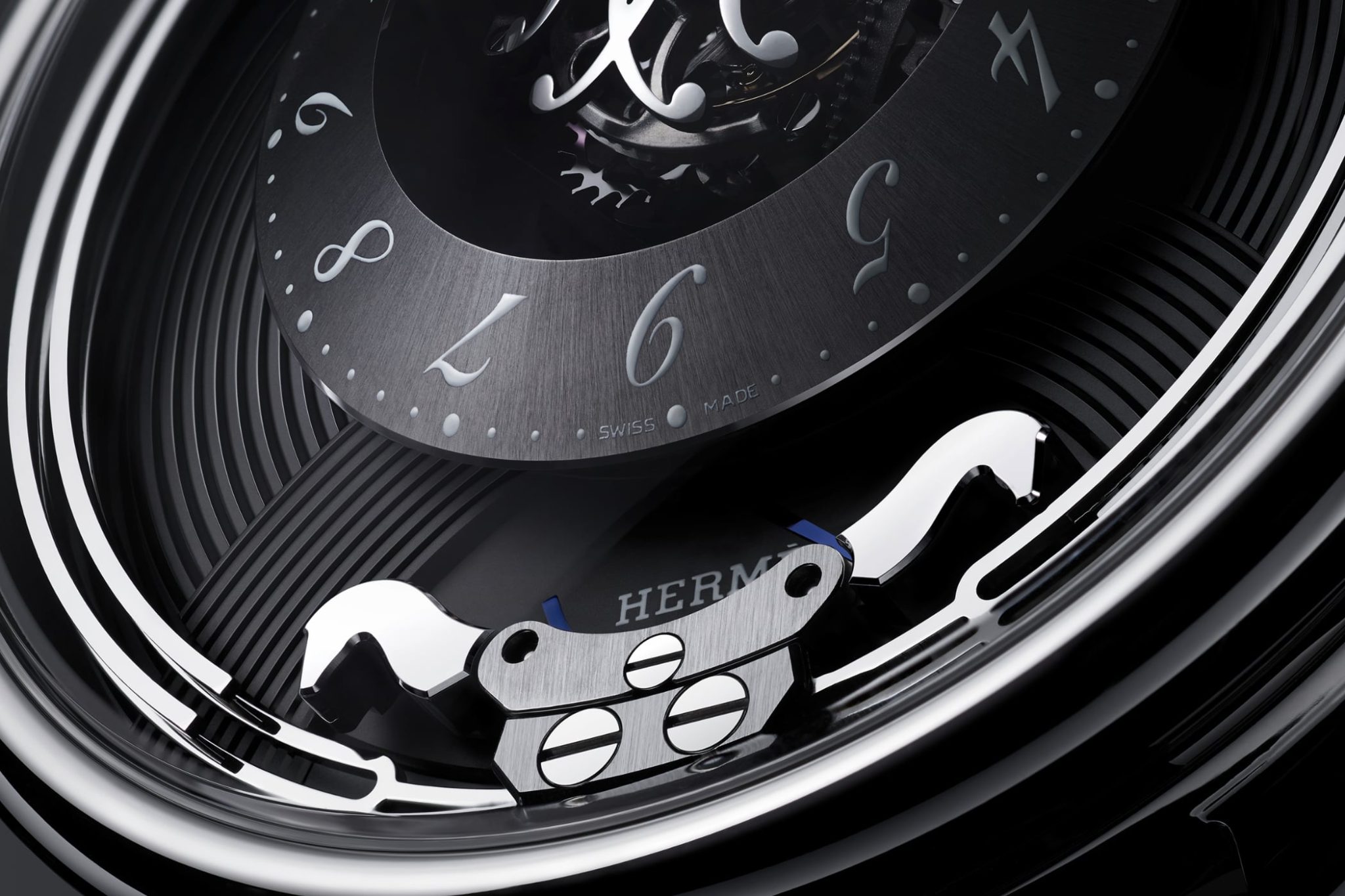
One calibre, two complications
This timepiece unites a movement that integrates a very special combination of two major complications in its case: a triple-axis tourbillon and a minute repeater. Thus, Hermès has created an unprecedented combination that speaks to all the senses. Through the sapphire crystal, the movements of the hand-wound H1926 in-house calibre can be admired from both the case’s front and back. Interestingly, the designation of the calibre is also highly symbolic, as the numerals mark the end of the renovation work in the famous Hermès boutique in Paris. Thanks to a high-frequency balance, the calibre oscillates at a frequency of 5 Hz.
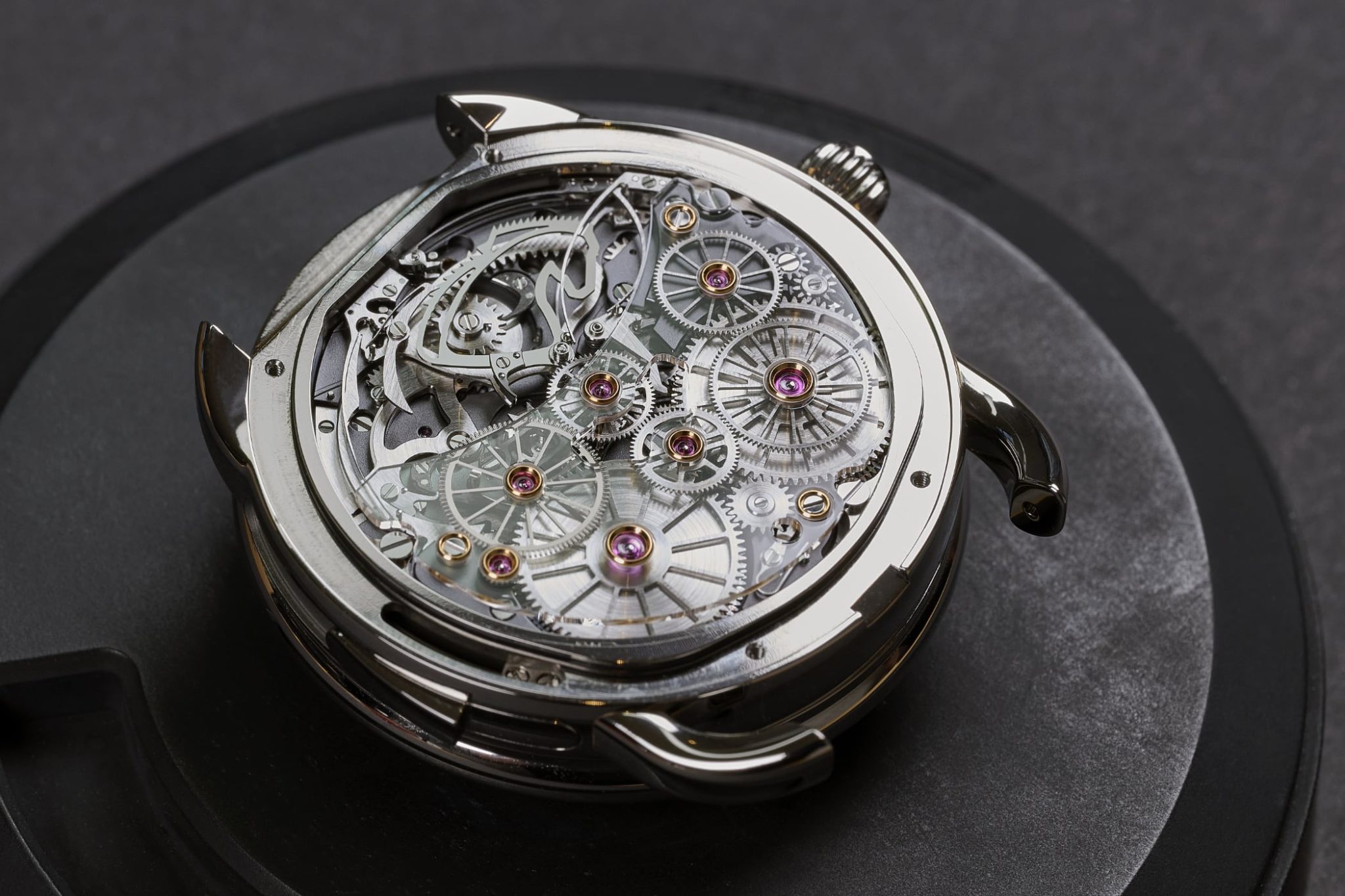
Eye-capturing: the triple-axis tourbillon
Surrounded by the hour-circle, the triaxial tourbillon captures any onlooker’s attention. The remarkable construction is made up of 99 individual parts, yet only weighs 0.449 g in total. Three tourbillon cages made of highly polished titanium move on three different axes in the centre of the timepiece. Shaped like two intertwined ‘H’ characters, they also point to a piece of Hermès history. The letters refer to the wedding of Emile Hermès and Julie Hollande, who married in 1900. In their honour, wrought ironwork with the initials of their surnames adorns the Parisian boutique’s lift at 24 Rue du Faubourg-Saint-Honoré. This ironwork in turn served as a model for the design of the tourbillon cages, which perform a full rotation at different speeds (in 300, 60 and 25 seconds). Implementing and mechanically coordinating this miniaturisation alone requires the highest degree of craftsmanship.
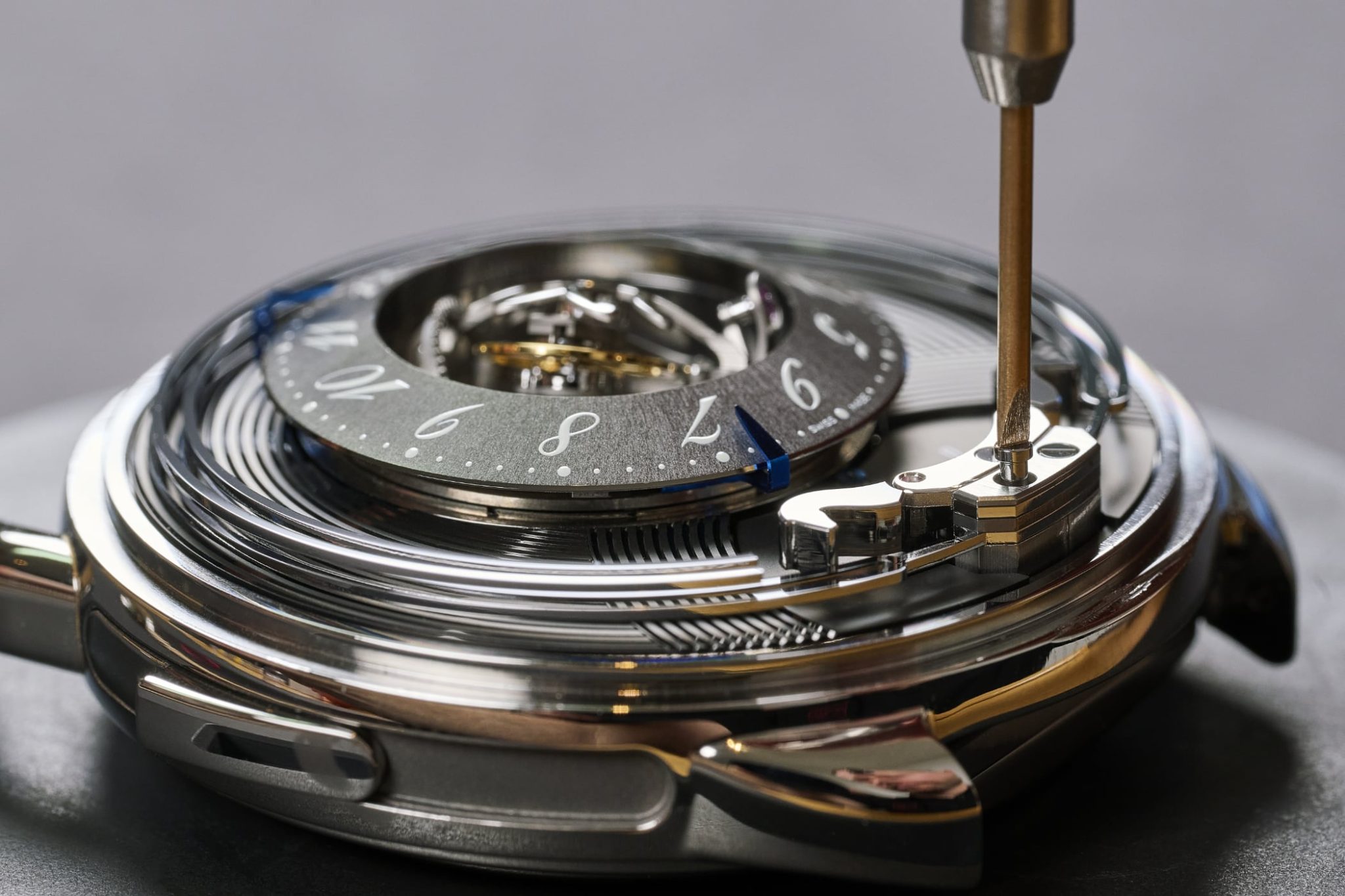
Music to your ears: The minute repeater
The Hermès Arceau Duc Attelé does not only display the time, but also makes it audible. Components of the minute repeater, which can be activated via a slider on the left side of the case, can be seen on the dial. Two highly polished hammers in the shape of horse heads, facing in opposite directions, strike the elongated U-shaped branches of the long gong on the edge of the dial at 6 o’clock. Made of hardened steel, the gong is shaped like a tuning fork on both sides of the hammers and circles the edge of the dial. Thus, it ensures optimum resonance and acoustics when the minutes, quarter hours, and hours are audibly displayed. When the hammers strike the gong, melodic tones are produced, reminiscent of the sound of church bells.
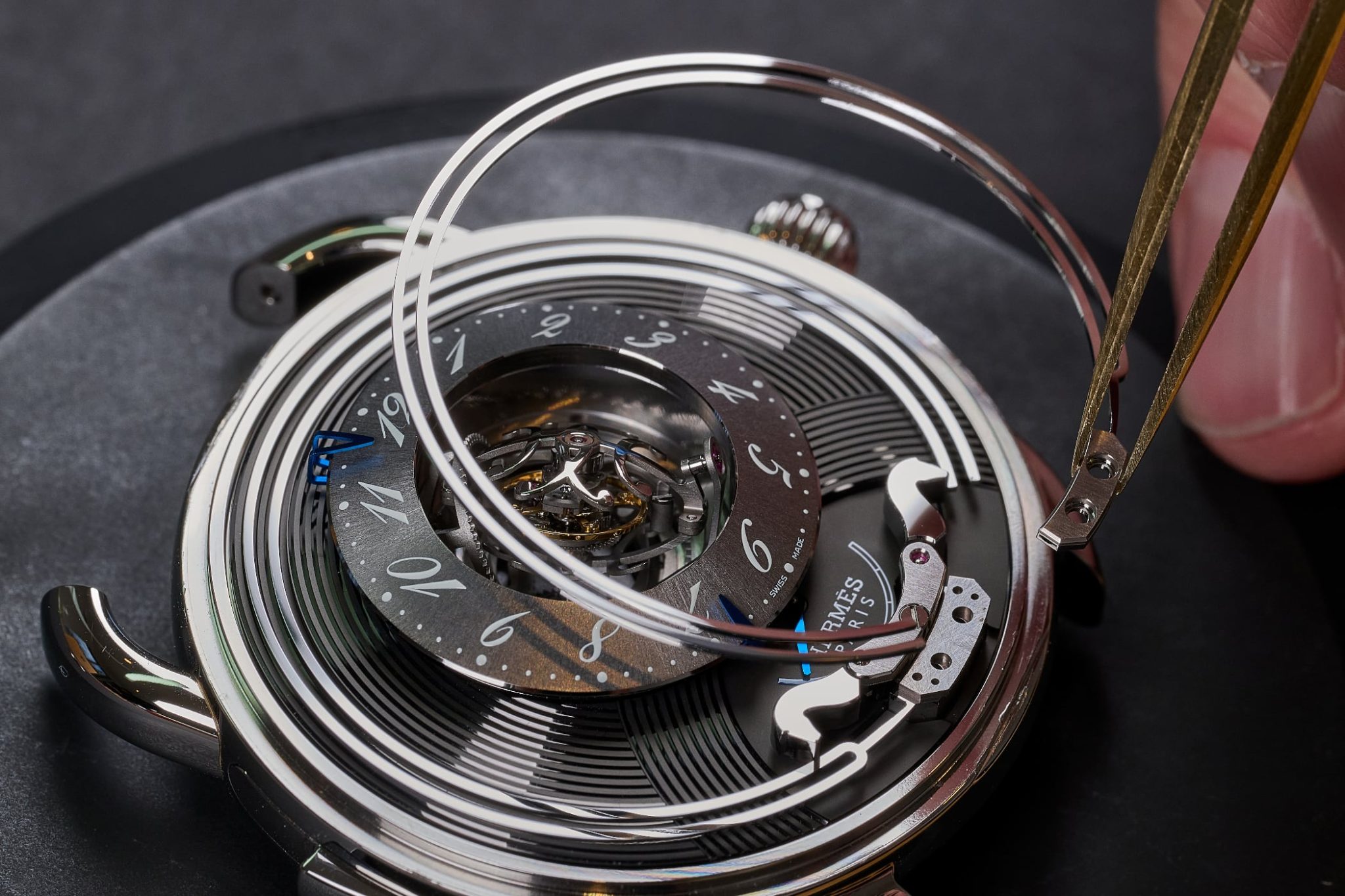
Views from the sapphire caseback
Through its sapphire crystal caseback, the timepiece also offers unique views of its calibre. At the same time, it also reveals the origin of the Duc Attelé addition to this model in the Arceau series. The name is derived from a horse-drawn carriage. The Duc Attelé is a four-wheeled carriage with a hood that can be steered from the inside and is pulled by two horses. Inspired by French animal painter Alfred de Dreux’s work, the carriage eventually became part of the famous Hermès logo. However, the use of the carriage motif is not limited to the logo. For this model, its wheels served as a source of inspiration for the design of the movement wheels. With their beautifully crafted spokes and symmetrical arrangement, they create a harmonious look.
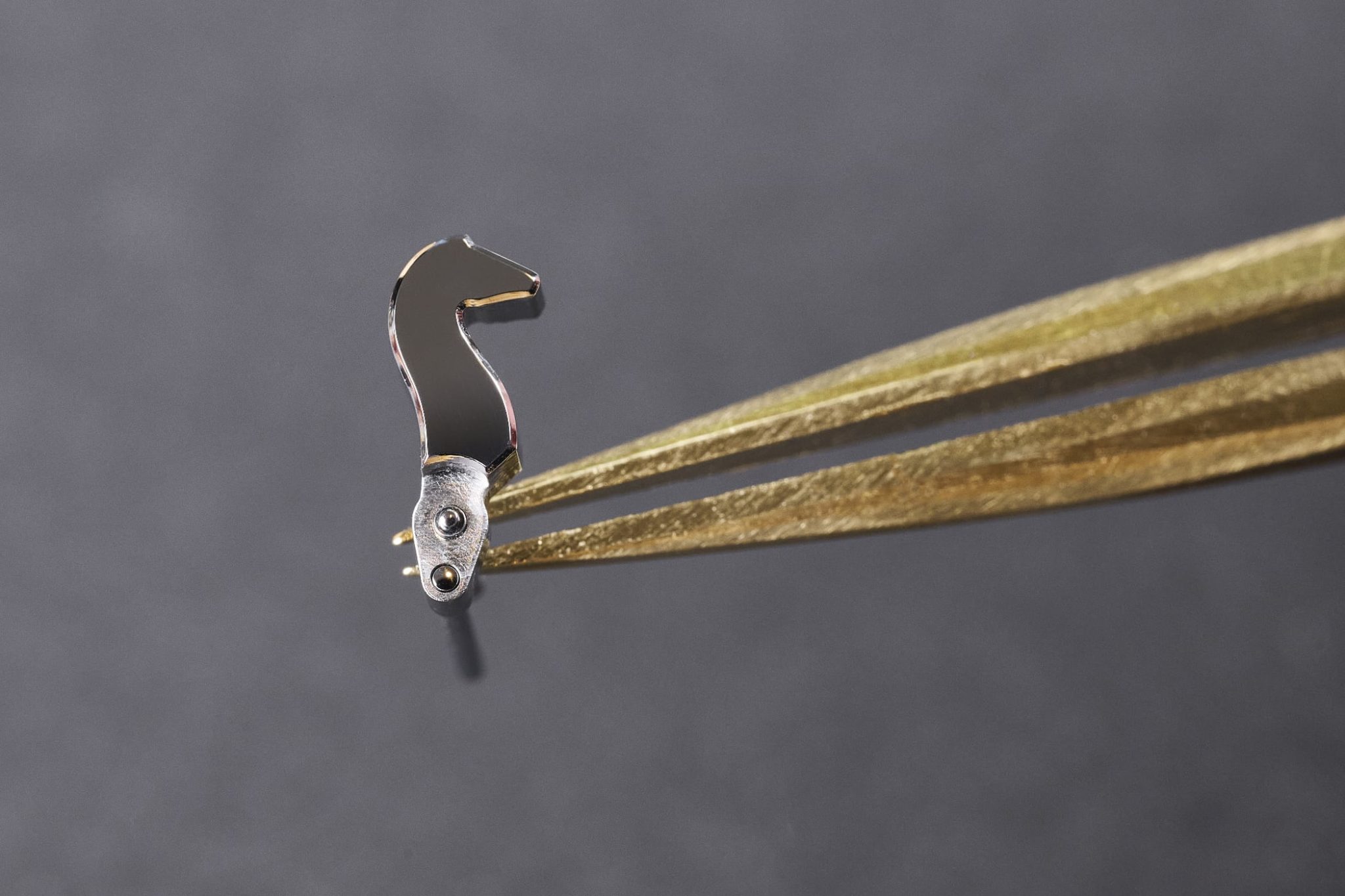
The skeletonised rake is in keeping with equestrian aesthetics. Like the hammers, it is designed in the shape of a horse’s head. Yet, in this case, it bears a horse’s mane, which is made up of the rake’s teeth. Moreover, the plate’s anthracite grey PVD coating further emphasises the aesthetics of all these elements. In addition, three-quarters of the open-worked strikework bridge are made of sapphire crystal and provide a view of even more hand-finished movement components. At the same time, it also amplifies the sound of the minute repeater. Hermès thus offers a sophisticated watch that not only appeals to the eyes and ears, but also creates a larger framework of meaning with its design references to the prestigious brand’s history.
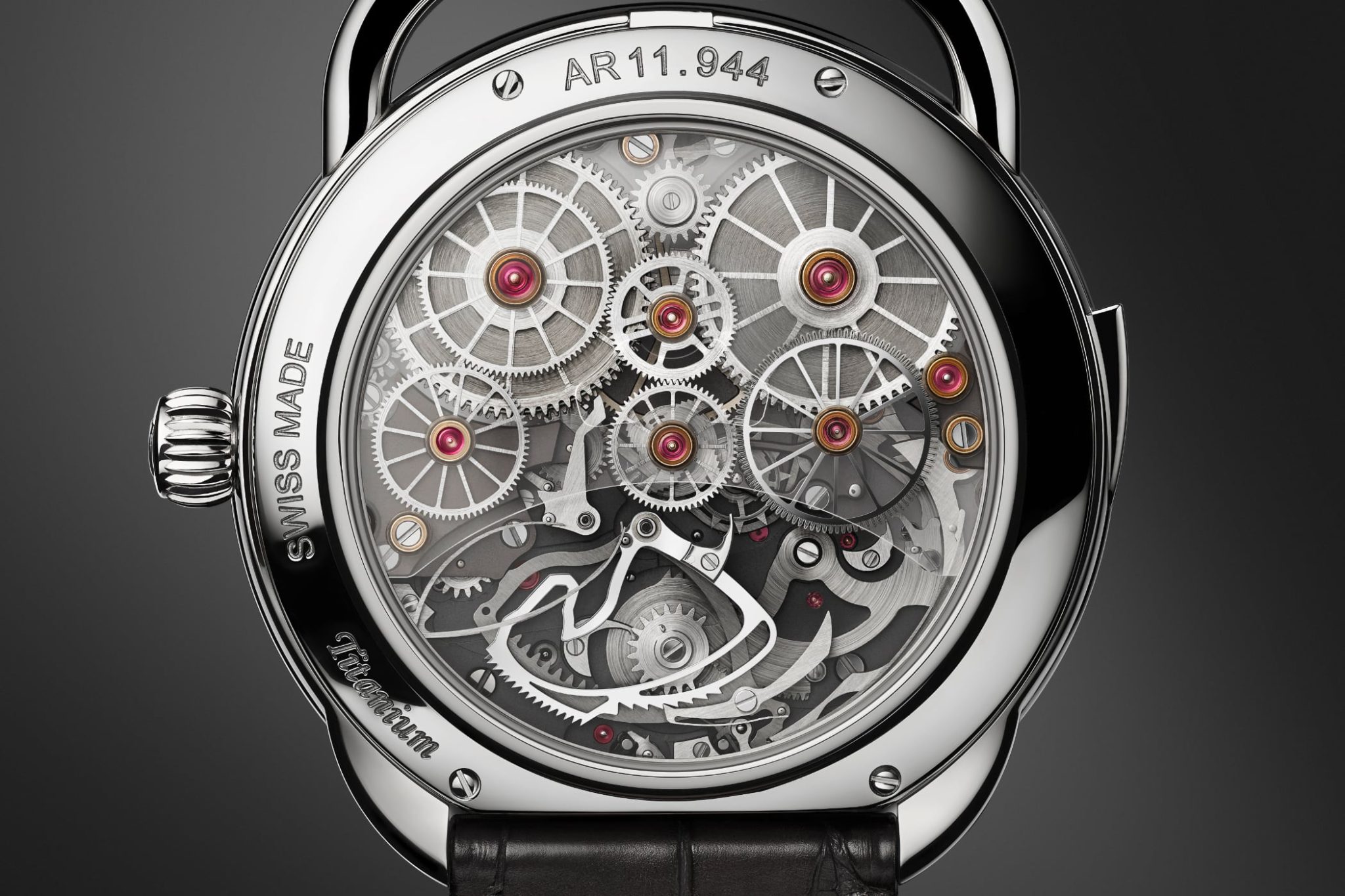
Strap, price, and availability
Completing the poised look, the straps match the colour concepts of the respective variations. A matte alligator leather strap in anthracite grey complements the titanium Arceau Duc Attelé, while an ‘abyss blue’ alligator leather strap with a matte look rounds off the rose-gold version. Both straps are fitted with a folding clasp made from the same material as the respective case. These special watches are limited to just 24 numbered pieces each. The price of each timepiece is available upon request.
